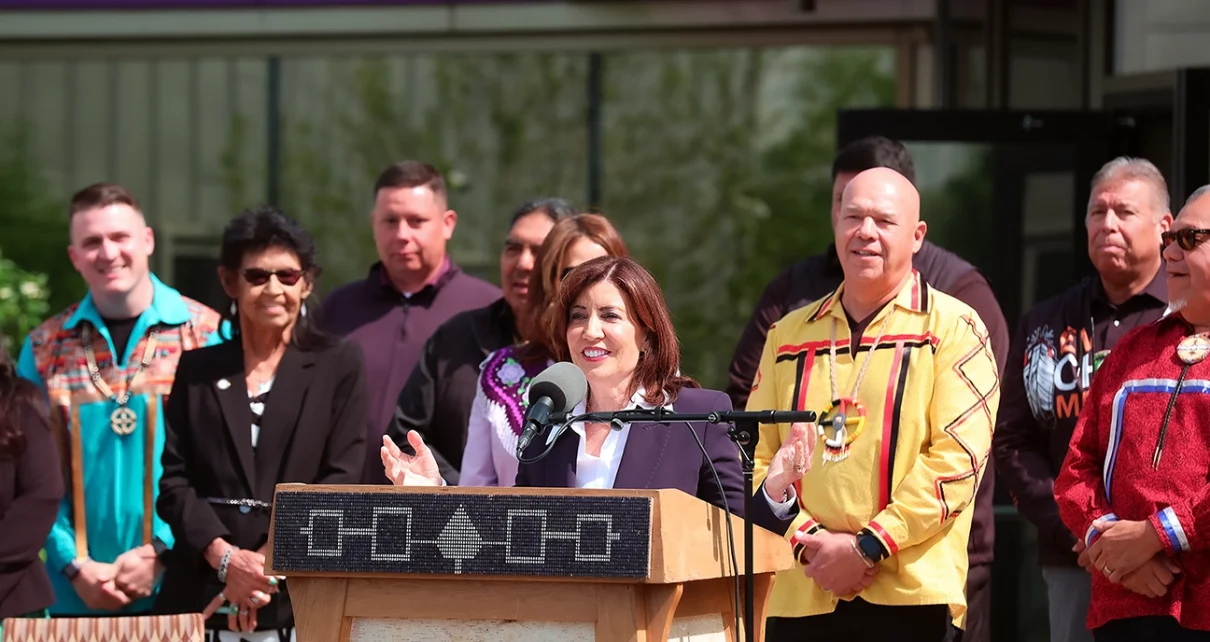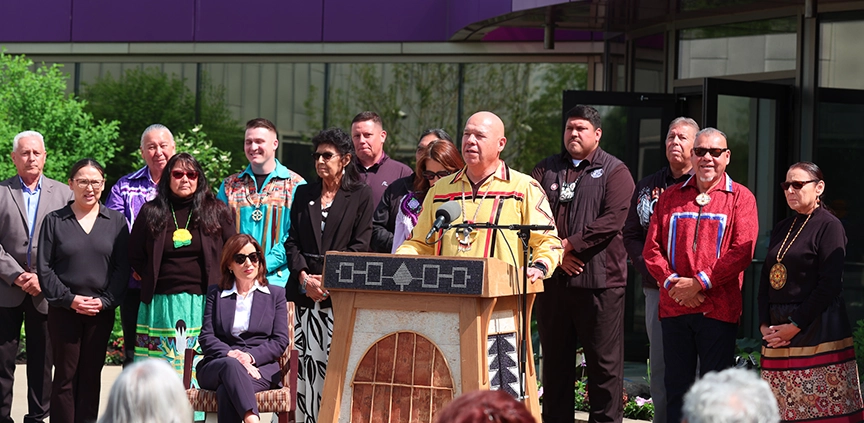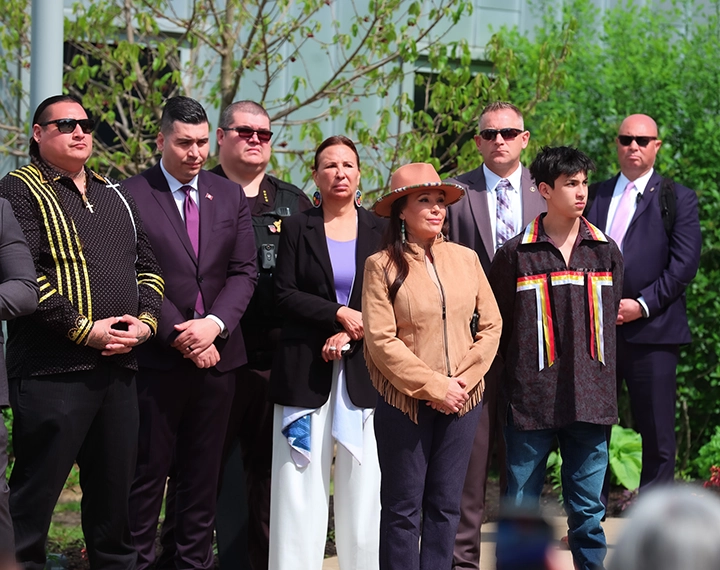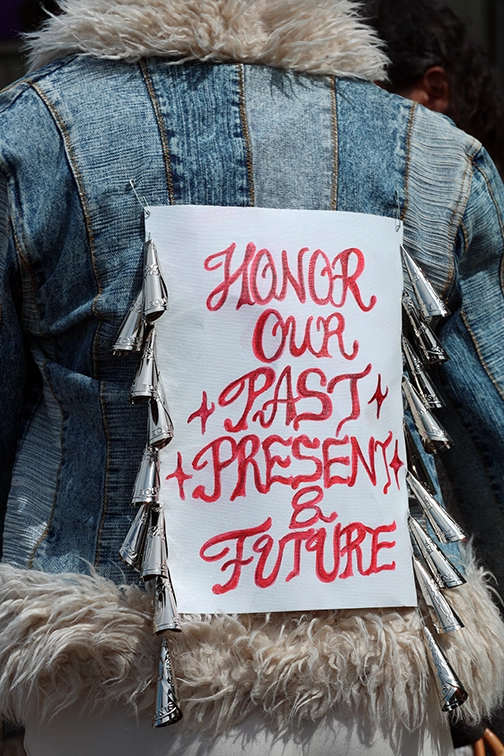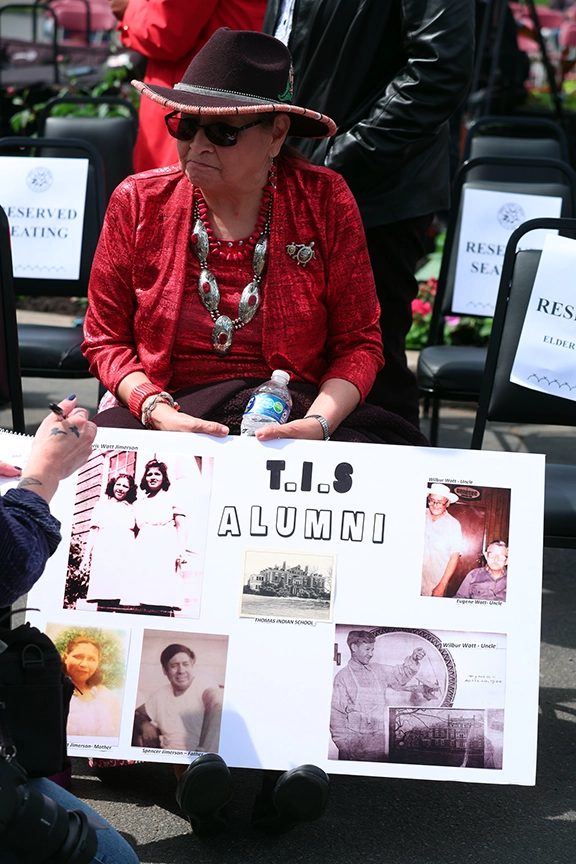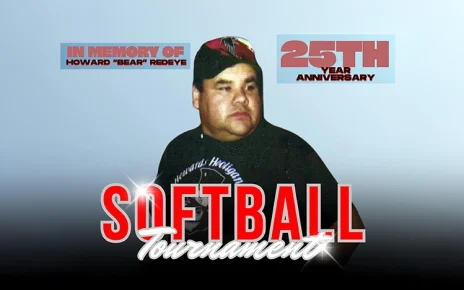President J. Conrad Seneca and Governor Kathyy Hochul Meet with Survivors and those Still Impacted by Thomas Indian School’s Atrocities during Governor’s Historic Visit to Cattaraugus Territory
May 20, 2025
CATTARAUGUS TERRITORY, IRVING, N.Y. – Nearly 70 years after the Thomas Indian School closed its doors for the final time, New York State has officially apologized for the atrocities that occurred there for nearly a century and for the pain and trauma that still impact countless individuals and families.
“Today is an important reckoning with a very dark and tragic period in history. It is a day that many people thought would never happen,” Seneca Nation President J. Conrad Seneca said. “Healing takes time, but it also requires accountability for the pain that people caused. We still feel the pain. Now, with Governor Hochul’s words of apology, our healing process can continue.”
Standing with President Seneca and members of the Seneca Nation Council on the grounds of the former Thomas Indian School campus, Governor Hochul delivered the words that the Seneca Nation, those who attended the school and the families have waited generations to hear.
“In order to move forward and avoid repeating the sins of the past, New York must acknowledge its role in the historical atrocities committed at the Thomas Indian School – and the enduring trauma that was inflicted upon the Senecas and all Indigenous peoples across New York,” she said. “Today, on behalf of the State of New York, I apologize to the Seneca Nation of Indians – and the survivors and descendants from all Nations – who attended the Thomas Indian School. We cannot change the horrors of the past, but I recommit to the truth, justice, reconciliation, accountability, and healing that are so essential to move forward together.”
The public apology came after President Seneca and Governor Hochul met privately with Thomas Indian School alumni, survivors and family members.
Originally established by Presbyterian missionaries on the Cattaraugus Territory in 1855, Thomas Indian School was owned and operated by the State of New York from 1875 until it closed in 1957. Thomas Indian School, and other residential boarding schools across the United States and Canada, operated under the government’s policy of forced assimilation of Native children. Thousands of children from various Native Nations were separated from their families and forced to attend the schools. They were stripped of the traditional language and culture, and suffered abuse, violence, hatred, and sometimes death, at the hands of school officials. Thousands of children are known to have died at the residential boarding schools. It is believed that the deaths of hundreds – if not thousands – more were never documented.
The devastating impacts the boarding schools had on Native American families and communities, including the decimation of family structures and traditional language, are still keenly felt today.
“Children’s lives were shattered. They were made to feel like they were unworthy because of who they were, how they looked and the language they spoke. Abuse and hatred were the lasting lessons,” President Seneca said. “That abuse and hatred was carried forward by those who survived and was passed on to their children and families for generations.”
Today’s apology by Governor Hochul is the most recent action to atone for the atrocities suffered by Native children at the Thomas Indian School. Last week, the New York State Senate unanimously passed a resolution that officially acknowledged the State’s role in the school’s operation.
“Welcoming the Governor to our territory, having her meet directly with Thomas Indian School survivors, hearing her apologize on behalf of the State of New York, hearing the New York State Senate’s resolution read on the Senate floor – these are all significant and emotional moments. You can feel a weight being lifted from your chest,” added President Seneca, whose father attended Thomas Indian School, and whose grandmother was removed from her family at age 11 and forced to attend Carlisle Indian Industrial School in Pennsylvania. “The pain will always be there but recognizing our history and what happened here strengthens our resolve to make sure that nothing like this will ever happen to Native people again.”

